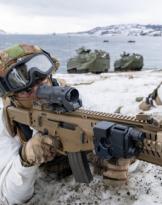It is early in the morning when the outline of a ship approaches and begins its approach towards the basin which, now flooded, is ready to welcome it inside. A delicate maneuver, entering the dock, which requires professionalism and great teamwork, but the stop of a ship in the dock is essential for carrying out maintenance work that is impossible in floating.
The dry dock is a complex construction, essential for carrying out checks, maintenance and repairs to the hull of boats, in particular to the hull and its appendages. There are two types of basins, fixed (the traditional masonry ones) and mobile, called floating basins. The fixed basins are large rectangular basins with walls mostly made of concrete or freestone, arranged in such a way as to be placed in direct communication with the sea. The sea side, called "mouth", is usually closed by means of a steel float, the "boat-door" or "boat-door", which can be made to sink using sea water as ballast and arranged symmetrically with respect to the longitudinal plane of symmetry of the pelvis. The boat-door is garnished, along the sides and the bottom, with a hemp straw with which it holds in its seat, obtained on the sides and on the bottom of the basin.
The base of the Marina di Taranto hosts a historic masonry basin, the Ferrati, the largest in the Mediterranean, able to accommodate ships the size of the aircraft carrier Cavour. 250 meters long, more than 50 wide, it was built in 1916 and is named after Edgardo Ferrati, enlightened engineer of the naval genius, famous for having directed the construction of important units including Benedetto Brin, Vittorio Emanuele and Conte di Cavour and, above all , for the ingenious intuition in the design of naval solutions and futuristic defense systems.
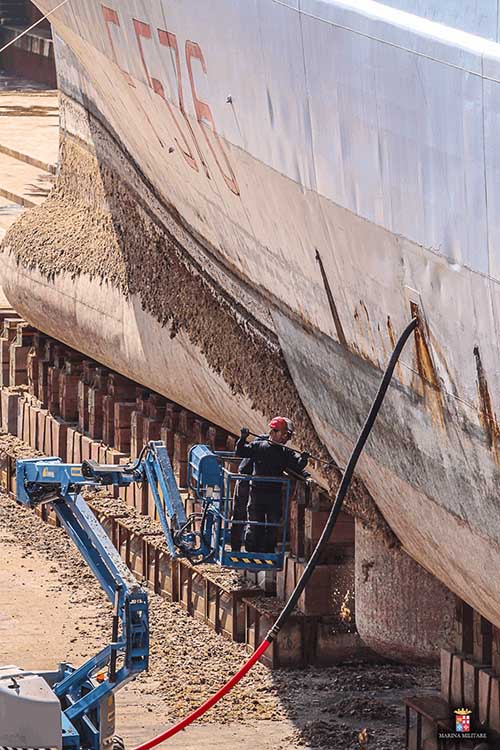 The activity of the Ferrati basin it was interrupted for about three years, from the 2010 to the 2013, for static consolidation works, included in the restructuring program of our nineteenth-century arsenal, the "Piano Brin". The first major shipbuilding operation, after the restructuring, was the one by ship Garibaldi, docked in January 2014.
The activity of the Ferrati basin it was interrupted for about three years, from the 2010 to the 2013, for static consolidation works, included in the restructuring program of our nineteenth-century arsenal, the "Piano Brin". The first major shipbuilding operation, after the restructuring, was the one by ship Garibaldi, docked in January 2014.
The modernization of the infrastructure represented a starting point for the relaunch of the Arsenale and the local economy, in particular for companies specialized in the shipbuilding sector. In fact, in recent years, the Military Maritime Arsenal of Taranto, together with the Logistic Command, has launched a policy of dual use of its structures, in particular of the dry docks, also allocating them to the maintenance of merchant ships, with the aim of self-finance and, at the same time, support the naval engineering and port industry of the city.
In this context, in March 2015, the Dimonios, a ferry Ro-Pax of the Visentini Shipyard, twin unit of the Norman Atlantic. It was the largest ship ever hosted in a post-war military basin and, second, only to the battleships that took part in the Second World War.
The maneuver for placing a ship in the dock is complex and requires great coordination between the dock personnel, the ship's crew and the support means (boats, tugs).
In the first phase the basin is flooded, opening the main valves. Then the boat brings (the wall that separates the inside of the basin from the surrounding body of water) is moved by a tug that will hold it in a position that does not interfere with the maneuver of the unit that must be introduced.
At this point the ship, with the support of the tugs, moves to the entrance alignment of the center of the basin and approaches slowly until passing the mooring lines and then topping (moving the ship using only the cables) to the position central. Once in position the staff of the dock corrects the position of the ship using hoists, to ensure that it is perfectly centered with respect to the plane of the taccate (wooden supports placed on the dock of the basin on which, after emptying the basin, rests the ship) . Meanwhile the boat door is repositioned to close the basin.
Then the emptying phase of the basin begins. Using powerful pumps the water level begins to drop. At 2 meters from the taccate part of the intervention of specialized divers, who dive to verify that the unit is properly seated.
The phase of support on the taccades represents a very delicate moment of the maneuver that requires continuous rounds in the internal rooms by the crew, to verify that there are no structural problems connected with the support on the taccades.
The entrance into the basin, from the entrance phase of the unit to the emptying and positioning on the notches, takes about 10 hours.
A delicate and long maneuver, therefore, but that allows, once the ship is dry, to carry out maintenance operations that can not be carried out in floating for which it is essential to use a dock.

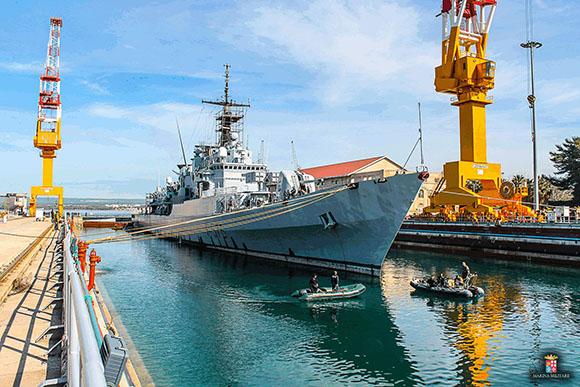
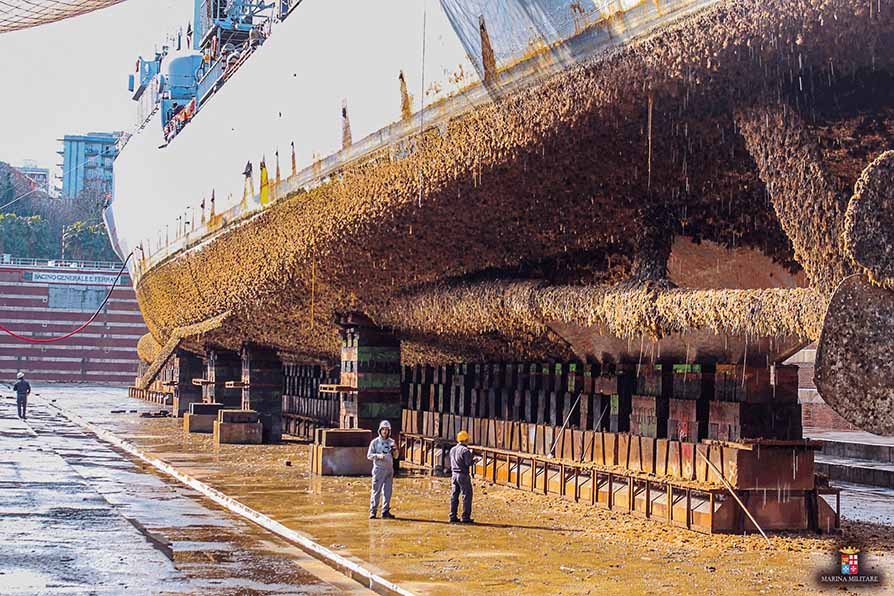
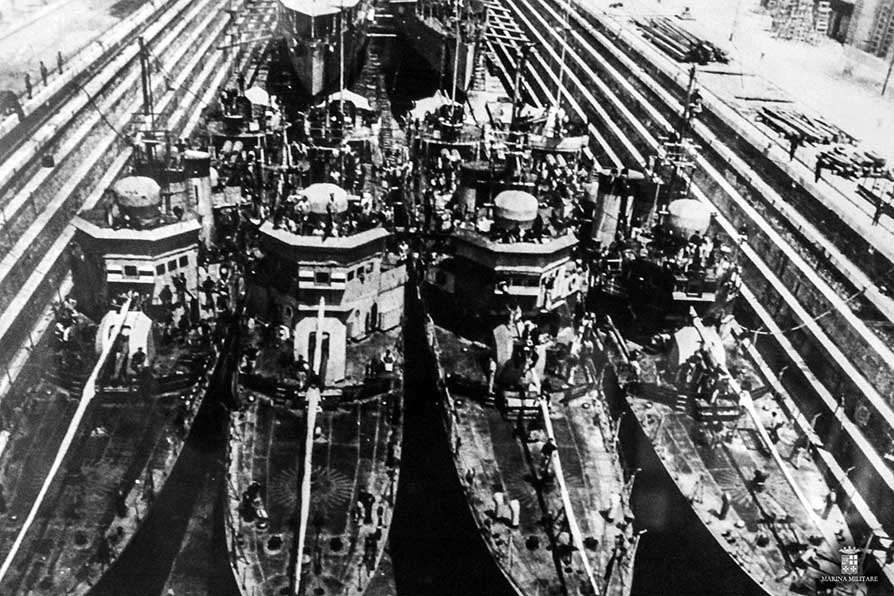
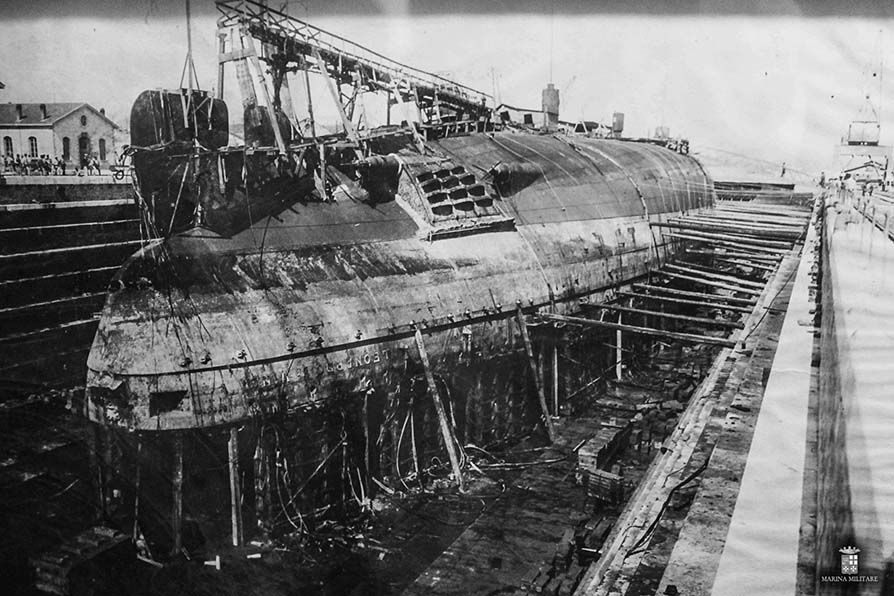
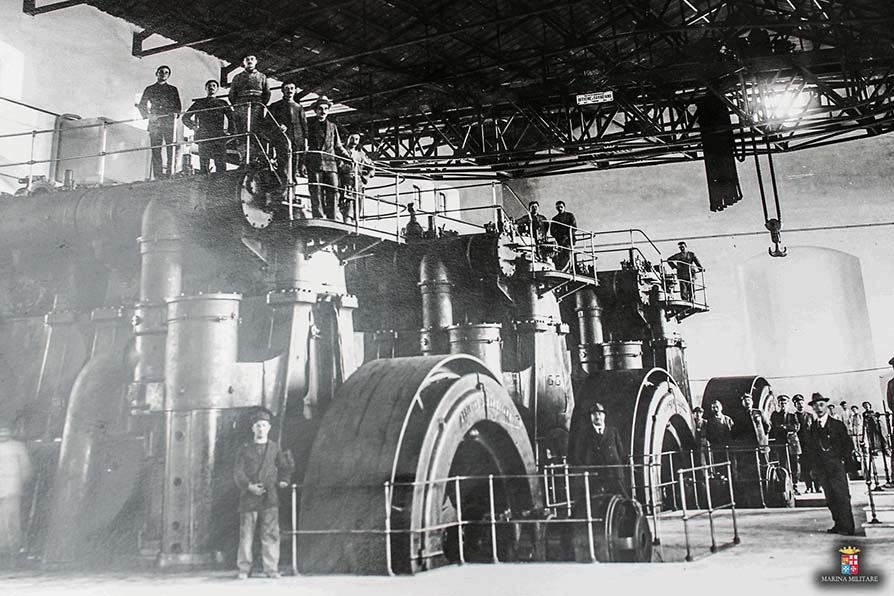 (
(






